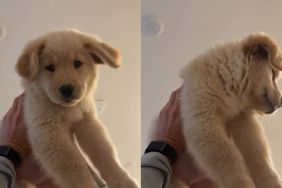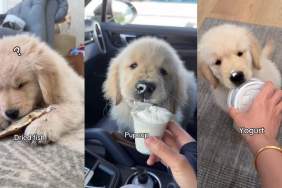Just like young children, puppies use their mouths to explore their world. Unlike young children, they also use their mouths to play, with you or with other pups. As you may already be aware, their teeth are like sharp little needles and a bite or nip from a pup can be pretty painful!
This biting is probably not aggressive in young pups and they don’t mean to hurt you, but it can turn into an unwanted behavior if it isn’t addressed while they are young. The same goes for jumping up on you. When he’s a 10-pound pup, it may not be so bad. When he grows into an 80-pound beast, you may not like it.
Training proper bite manners
Begin by substituting your hands, fingers, feet, and toes with chew treats and toys when you want to pet him, inspect his fur, or play. Children should also be taught this method. When you reach out to pet your pup or give him a scratch, have a toy or chew treat in the other hand to offer him. This way, he will direct his chewing and biting onto the object rather than your hand.
Switch the hand with the toy in it often so he won’t anticipate which hand it is in and make a leap at it. The idea is to show the puppy that people and petting are good things, and so are chewies or toys! Start off slowly and keep the time short. As you pet or scratch him, his excitement will build and he’ll switch to your hand if you go too long.
Redirecting “bad” biting
Training your pup that the family’s body parts are off limits doesn’t stop with petting and substituting. He’s happy, he wants attention, he grabs your sock in his mouth and a couple toes in the process…OUCH!
As soon as that nip happens, face your pup and yell “OUCH!” Let him know that hurts; whine and cry and whimper…and then turn your back and ignore him. Pay no attention until he calms down. Only then can you give him a toy or chew treat and pet him.
The jumping jack
Your pup craves your attention and there are a lot of ways he’ll try to get it. Jumping up on you is one of the more effective ways. “Isn’t that cute?” Well, yes, for a few days, maybe. After that, it’s just annoying. Even if you tell him to “Get down!” or push him away, at least he got your attention…negative though it may be.
When your puppy jumps up:
- Turn away from him, fold your arms and give the command “Off.”
- Your pup will try to follow you around. Keep turning away and saying “Off” until he stops jumping. Praise him and (if he knows how) ask him to sit. If he obeys, reach down to pet and praise him. Keep your praise calm. An excited voice and actions will trigger the jumping again. If he does jump, repeat the steps.
Once your pup realizes that jumping equals no attention, while sitting equals attention, he’ll stop, but be consistent. If he comes and sits by you, tail wagging, give him the attention he craves.
A list of DON’Ts
If you hit or shove your puppy when she nips at you, you are encouraging fear and defensive behaviors. These can manifest themselves in different ways:
- He could become fearful of you or anyone else’s hand near his muzzle or head.
- He could become fearful of you, running or trying to hide when you are around.
- He could become aggressively defensive, biting in an attempt to stop you from hurting him again.
- He could become even more excited and nippy; thinking a shove or mild smack was just “puppy play.”
Tug toys and rough play are fun, but you have to set limits. If your pup is getting too excited or nippy, stop the play and pet him for awhile. If he won’t calm down, ignore him, walking away if you have to, until he does.
Consistency is key
It is imperative that you are consistent when training and redirecting puppies toward acceptable behaviors. All members of the household must enforce the rules when interacting with your pup.
Young children and puppy nipping
If you have children nine years or younger, it may be hard for them to enforce the training and behavior modification needed for the puppy. Many young children push the pup or run away when they are nipped. The puppy thinks this is just more play and will continue nipping. With young children, be sure they are under supervision when playing with the puppy.
Source: Adapted from the Humane Society of the United States









